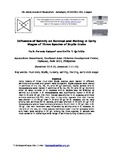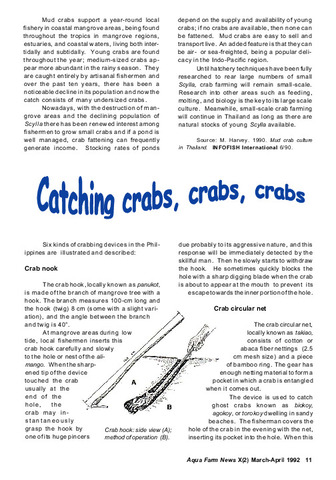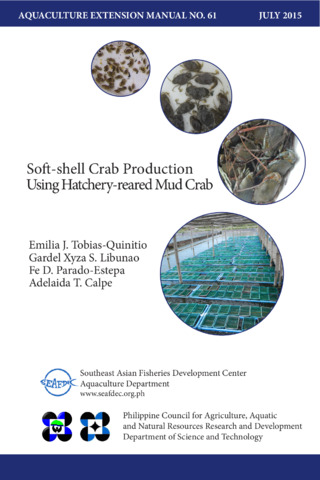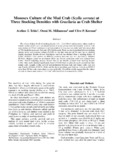Influence of salinity on survival and molting in early stages of three species of Scylla crabs
Share
Abstract
Early instars of three mud crab Scylla species were reared in different salinities and survival and growth were compared. Scylla olivacea were reared in salinities of 12, 16, 20, 24, and 32 g/l (control). Scylla serrata and S. tranquebarica were reared in salinities of 8, 16, 20, 24, and 32 g/l (control) After 75 days, survival of S. olivacea and S. serrata was not affected by salinity but survival in S. tranquebarica was significantly higher in 8-20 g/l than in 24 and 32 g/l. The molt interval was shorter in S. olivacea, and more animals attained the fifth molt, than in the other species. The molt interval was shorter in 12-20 g/l than in 24 and 32 g/l for S. olivacea, did not vary among test salinities for S. serrata, and was shortest in 20 and 24 g/l in S. tranquebarica where fewer animals attained a fourth molt in 32 g/l than in 8-20 g/l. The molt increment was influenced by salinity only in S. olivacea. At the end of the test, all three species exhibited lower internal carapace width and mean body weights in 32 g/l. Among the three species, S. serrata was most versatile in tolerating a wide range of salinities during nursery culture.
Suggested Citation
Parado-Estepa, F. D., & Quinitio, E. T. (2011). Influence of salinity on survival and molting in early stages of three species of Scylla crabs. The Israeli Journal of Aquaculture-Bamidgeh , 63(IIC:63.2011.631), 6 pp. http://hdl.handle.net/10862/2115
Subject
Collections
- AQD Journal Articles [1249]
Related items
Showing items related by title, author, creator and subject.
-
Catching crabs, crabs, crabs
Castaños, Milagros T.; Southeast Asian Fisheries Development Center, Aquaculture Department (Aquaculture Department, Southeast Asian Fisheries Development Center, 1992) -
Soft-shell crab production using hatchery-reared mud crab
Tobias-Quinitio, Emilia J.; Libunao, Gardel Xyza S.; Parado-Estepa, Fe D.; Calpe, Adelaida T. (Aquaculture Department, Southeast Asian Fisheries Development Center; Philippine Council for Agriculture, Aquatic and Natural Resources Research and Development (PCAARRD), 2015)"The production of soft-shell crabs is well established in other Asian countries but its sustainability is already being threatened due to the decreasing mud crab population in the wild where the seedstocks are sourced. ... -
Monosex culture of the mud crab Scylla serrata at three stocking densities with Gracilaria as crab shelter
Triño, Avelino T.; Millamena, Oseni M.; Keenan, Clive P. (Australian Centre for International Agricultural Research, 1999)The effects of three levels of stocking density (0.5, 1.5 or 3.0/m2) and monosex culture (male or female) on the growth, survival and production of Scylla serrata were investigated. Juvenile crabs were stocked in 150 m2 ...





